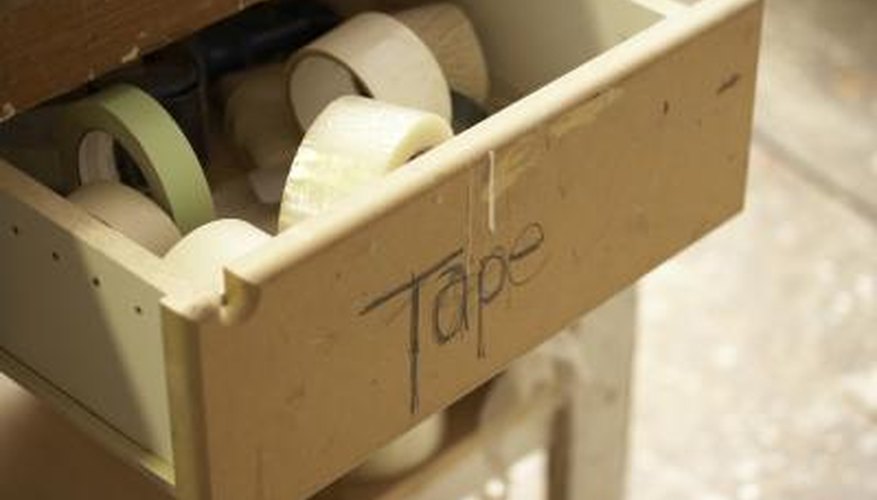Duct tape is a durable adhesive material used to bond or hold materials together. The tape was originally developed by the military in 1942 as a water-resistant seal for ammunition cases in World War II, but it has since filtered into mainstream society and now is a popular household item. The rubber-based adhesive tape is backed by fabric and sealed with reinforced polythene, which adds strength and makes it resistant to water. It is most commonly used to repair leaking ducts or air conditioners. As with all tools, improper or irresponsible usage can cause injuries.
Suffocation
Duct tape is a tool and can become dangerous if not used properly. The sealant nature of duct tape prevents both moisture and air from entering areas, therefore there is a risk of suffocation if the tape is placed over someone's mouth or nose. Ingesting duct tape also can present respiratory problems because the adhesive could block the airway. Therefore all remnants of duct tape should be properly disposed of and kept out of reach from young children.
- Duct tape is a tool and can become dangerous if not used properly.
- The sealant nature of duct tape prevents both moisture and air from entering areas, therefore there is a risk of suffocation if the tape is placed over someone's mouth or nose.
Asbestos
According to the Mesothelioma Resource Center, a number of duct tape companies were selling tape that contained asbestos in 2007. This ingredient has since been eradicated from the ingredients by duct tape manufacturing companies, however, problems may arise if older rolls of duct tape that contain asbestos are kept and used. Asbestos is a toxin that can cause respiratory problems when airborne and exposure to the toxin over a long period of time can result in a number of health conditions, including lung cancer and asbestosis. Old rolls of duct tape that contain asbestos are easily identified by their colour; old tape is usually white, whereas new tape is silver.
- According to the Mesothelioma Resource Center, a number of duct tape companies were selling tape that contained asbestos in 2007.
- This ingredient has since been eradicated from the ingredients by duct tape manufacturing companies, however, problems may arise if older rolls of duct tape that contain asbestos are kept and used.
Skin Suffocation
Similar to respiratory asphyxiation, covering areas of the body with duct tape can cut off oxygen to the skin's pores and, in severe cases, can pose serious health risks. Your skin is the largest organ in the body and needs to be exposed to oxygen to stay healthy. If more than 80 per cent of the body is covered in a nonbreathable material, there is danger of becoming unconscious or even causing death. Furthermore, the application of duct tape to the skin prevents sweat from being able to leave the body, which can result in toxins building up inside the body.
- Similar to respiratory asphyxiation, covering areas of the body with duct tape can cut off oxygen to the skin's pores and, in severe cases, can pose serious health risks.
- Furthermore, the application of duct tape to the skin prevents sweat from being able to leave the body, which can result in toxins building up inside the body.
Irritation
In recent years, a common use for duct tape is to remove plantar warts from the skin. This involves a square of duct tape being placed over the wart for a prolonged period of time, which cuts off oxygen to the wart and eventually the wart tissue dies and falls off. It is recommended that you consult a doctor before attempting this method, as the adhesive substance found in duct tape can cause irritation to sensitive skin.
